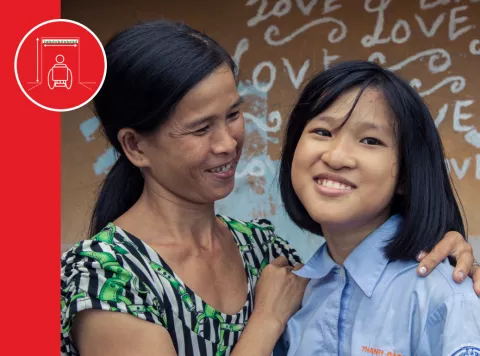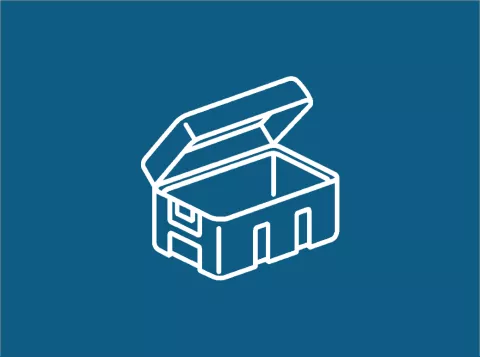Glossary
Definitions and abbreviations
|
accessibility |
“Accessibility is a precondition for persons with disabilities to live independently and participate fully and equally in society. Without access to the physical environment, to transportation, to information and communication, including information and communications technologies and systems, and to other facilities and services open or provided to the public, persons with disabilities would not have equal opportunities for participation in their respective societies.” (Source: General Comment N°2 of the CRPD) |
|
|
accessibility of buildings |
The provision of buildings or parts of buildings for people, regardless of disability, age or gender, to be able to approach, enter, use and exit from and evacuate a building independently, in an equitable and dignified manner and to the greatest extent possible21 |
|
|
alternative formats |
Formats of documents and other information that include options that can be read via touch, sound or sight, e.g., the format can be read easily by screen-reading software, such as EPUB, DAISY, HTML or Braille readable format, or has been designed with pictures or icons and simple, large letters/type or font |
|
|
Braille |
A system of raised dots that people who are blind can use to read with their fingers |
|
|
built environment |
Defined by the ISO as “external and internal environments and any element, component or fitting that is commissioned, designed, constructed and managed for use by people”;22 examples include schools, playgrounds, toilets, health centres and UNICEF premises |
|
|
CART |
Communication Access Realtime Translation; the instantaneous translation of spoken language into text that can be displayed in various forms and on a screen or monitor |
|
|
clear headroom |
Space above walkways to prevent hazards, particularly for tall people, persons with low vision or who are blind (from, e.g., cupboards, signposts, the bottom of stairways or tree branches) |
|
|
cm |
Centimetre (1 cm = 0.393 inches) |
|
|
colour blindness |
The inability to determine some colours; for example, green or red colours may appear to be grey |
|
|
CRPD |
Convention on the Rights of Persons with Disabilities |
|
|
DAISY |
Digital Accessible Information System; a global standard for digital books with audio supporting people who are blind or have other disabilities, such as dyslexia |
|
|
EPUB |
Electronic publishing; the current standard is 3.223 |
|
|
flush |
Completely level or even with another surface (not raised) |
|
|
going |
The horizontal part of a stair or step; also the horizontal distance between the start and end of a ramp |
|
|
grab-bars/railings |
Bars/railings that are placed beside bus seats, toilet seats, showers or bedsides to provide support, e.g., for transfer from a wheelchair to a toilet or for passengers to safely stand on a bus |
|
|
GrAF |
UNICEF’s internal Greening and Accessibility Fund |
|
|
hearing loop (audio induction loop) |
A sound system (built-in or portable) that produces an electromagnetic signal in an area of a building that can be received directly by hearing aids |
|
|
HTML |
HyperText Markup Language |
|
|
ISO |
International Organization for Standardization; a worldwide federation of national standards bodies that prepares widely used standards through its technical committees |
|
|
JAWS |
Job Access With Speech; a computer screen-reader program for Microsoft Windows that allows blind and visually impaired users to read the screen either with a text-to-speech output or by a refreshable Braille display |
|
|
kerb ramp |
A lowered kerb that provides a ramp for easier access to roads at sidewalk crossings; also called a ‘dropped kerb’, ‘sidewalk cut-out’ or ’curb ramp’ |
|
|
km |
Kilometre (1 km = 0.62 miles) |
|
|
landing space |
Space at the top and bottom of stairs and ramps, or in between and in front of lifts that helps people to safely rest or manoeuvre; there can be intermediate landings if a ramp or a flight of stairs is very long |
|
|
leaf |
The main part of a door or window, which may swing outwards or inwards, or slide sideways |
|
|
LRV |
Light Reflectance Value; a measure of colour contrast, which makes it easier for people with vision impairment to differentiate hazards and objects (on a scale of 0–100: 0 = black, 100 = white) |
|
|
lux |
The unit of measuring light (= to 1 lumen per square metre) |
|
|
m |
Metre (1 m = 1.09 yards = 3.28 feet) |
|
|
manoeuvring space |
Space needed to make a U-turn or to change position or direction of movement, especially for persons using wheelchairs or walking frames, or when a person is being carried on a stretcher during an emergency |
|
|
mm, mm2 |
Millimetre, square millimetre |
|
|
OPD |
Organization of Persons with Disabilities; sometimes referred to as Disabled People’s Organization (DPO) |
|
|
persons with disabilities |
Includes those persons with long-term physical, mental, intellectual or sensory impairments that in interaction with attitudinal and environmental barriers may hinder their full and effective participation in society on an equal basis with others |
|
|
PIDB |
Programme Information Database; a UNICEF database with codes to report financial expenditures on activities |
|
|
ramp |
Sloped pathway/surface that allows easy level change for people using bikes, strollers, wheelchairs and other objects with wheels |
|
|
RECU |
The reach, enter, circulate, use concept |
|
|
rise/riser |
The vertical part between each stair/step |
|
|
SDGs |
Sustainable Development Goals |
|
|
SRV |
Slip Resistance Value; a form of measuring slip resistance |
|
|
tactile |
A raised or bumpy surface that can be felt through touch |
|
|
threshold |
A low step (less than 2.5 cm) that can be found at the bottom of a doorway |
|
|
ToR |
Terms of reference |
|
|
tread |
The horizontal part of a step, excluding the step nose |
|
|
TWSI |
Tactile Walking Surface Indicators; tactile guiding pavements (tiles, strips) often required before hazards like roads or stairs that provide bumpy patterns on the ground or surface, which assist people who are blind or have vision impairment to feel (using a cane or feet) a clear pathway to walk or to alert them to hazards |
|
|
universal design |
The designing of products, environments, programmes and services to be usable by all people, to the greatest extent possible, without the need for adaptation or specialized design |
|
|
upstand |
A vertical support piece alongside a path/ramp for safety and guidance |
|
|
WASH |
Water, sanitation and hygiene |



